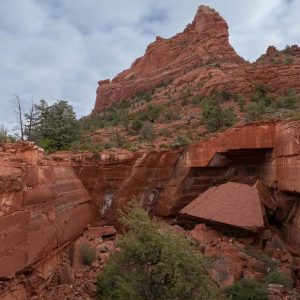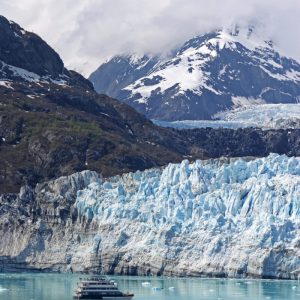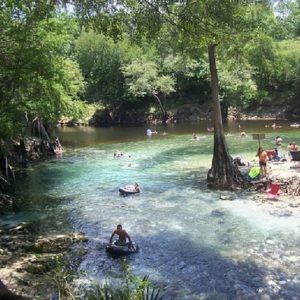
Havasu Falls is a beautiful and popular waterfall ensconced in the Grand Canyon in Arizona. More specifically, it is within the Havasupai tribal lands. If you’re planning a visit, you’ll want to read this guide.
Contents
Hiking Permits

The Havasupai Tribe only offers a 3 night/4 day camping permit to hike to the Havasu Falls. They can be purchased via the tribe’s reservation website. Permits go on sale every February 1st. Only 300 permits are sold daily. They cost between $300 and $375USD depending on which days you choose. Weekdays are cheaper.
The Hike
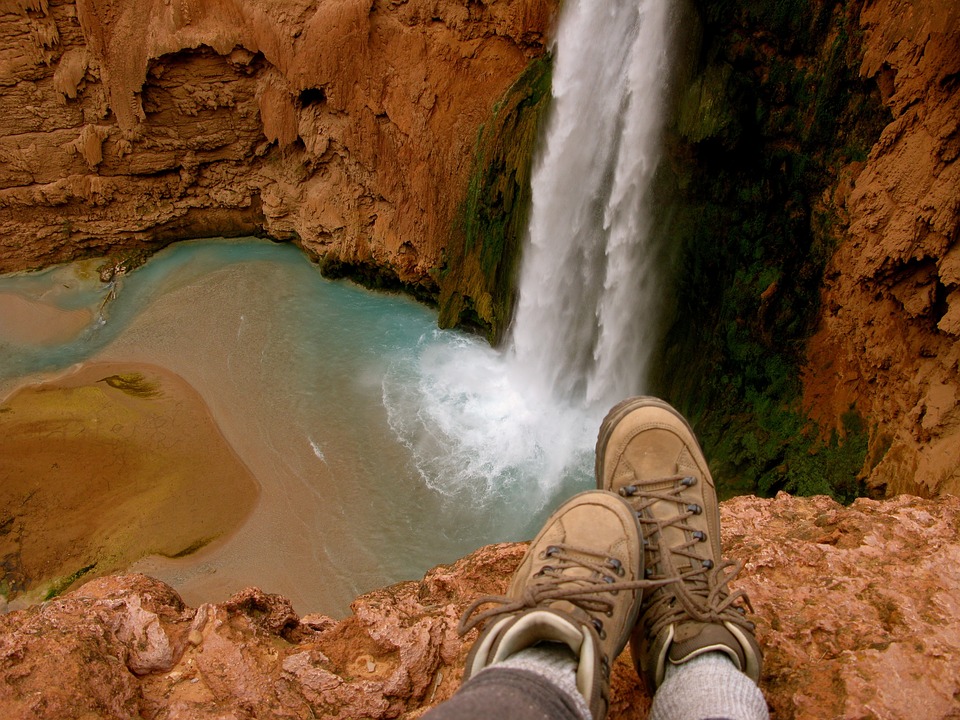
You will hike 10 miles to the campsite: eight miles to the tribe’s village to check in and another two miles beyond that. The canyon heats up as the day progresses so start as early as possible. The hike will take you at least four hours depending on your level of experience.
Packing List

Your roving writer hiked the Grand Canyon rim to rim with nothing but a change of clothing, water, and a travel toothbrush. Since overnighters are not currently possible, you may want to pack a bit more.
Tent/hammock/bedroll: Should you choose to camp out you will need a tent, hammock, and/or bedroll. Weight can be an issue. (Note: Sleeping under the stars sounds romantic but there are snakes in the canyon too.)
Hiking Boots: You should already have a good pair of hiking boots that provide good ankle support.
Water Shoes: There’s a chance you’ll be hiking across slippery river bottoms especially if you’re going to be exploring at the falls. Thus, bringing some type of water shoe is a good idea. Even if you keep your feet dry, the last two miles from the village to the campsite is mainly sand and can be a bit difficult to manage in hiking boots.
Clothes: Two pairs of socks per hiking day and an extra pair beyond that. You will also want two clean shirts and a daily change of underwear. While yours truly and his father hiked rim-to-rim without one, a hat will protect you from some of the heat and sun.
Food: While you have options regarding meals, you will want to bring snacks such as dried fruit and trail mix. Electrolytes are important.
Water: By now you should know how much water you require for a 10-mile hike. You can refill at your campsite. While hikers are often advised to bring filters, those who don’t take filters with them generally don’t have issues.
First Aid Kit: It’s a given that you will get a blister or two from hiking. So a first aid kit stocked with band-aids is a good idea.
Flashlight: If you’re going to be hiking prior to sunrise and camping out a flashlight or headlamp will be handy.
Toiletries: What items you bring will be based on your choice of accommodations. Nevertheless, a small travel-size bar of soap and a toothbrush or something similar is a good idea.
Insect Repellent: If you’re choosing to camp out then some type of insect repellent such as BugBands might not be a bad idea.
Bathing Suit: If you choose to go for a dip remember that a wet bathing suit is even heavier than a dry one.
Quick-dry towel: If you’re going to swim then you’ll want this.
Camera: If you want more than mental images, bring your camera/smartphone.
External Battery: You probably won’t have phone service while in the Grand Canyon but if you want photographs and forget to set your phone on airplane mode this won’t hurt.
Trailhead

The Hualapai Hilltop trailhead is located roughly an hour and a half out of Peach Springs, Arizona. (If you can find transportation to and from the trailhead then you won’t have to worry about parking there.)
Food
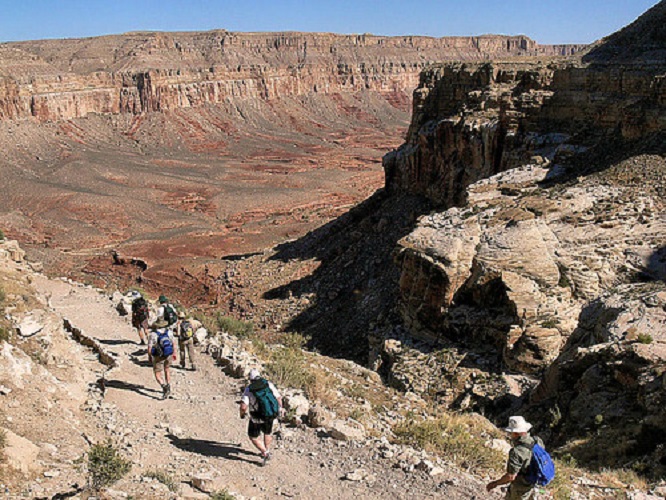
There’s a restaurant two miles away from the campsite and a small food stand at the campsite itself. The little eatery sells burgers, tacos, and Gatorade. Research their business hours so you can plan accordingly. Tacos are reported to be $12.00 so bring enough cash. Open flame fires are generally not allowed so if you wish to cook for yourself you will need to plan accordingly. Backpacking stoves are permitted.
Water

Water is available in the village. The campground also has water that’s sourced from a fresh spring. Again, filters are suggested but not required.
Restrooms
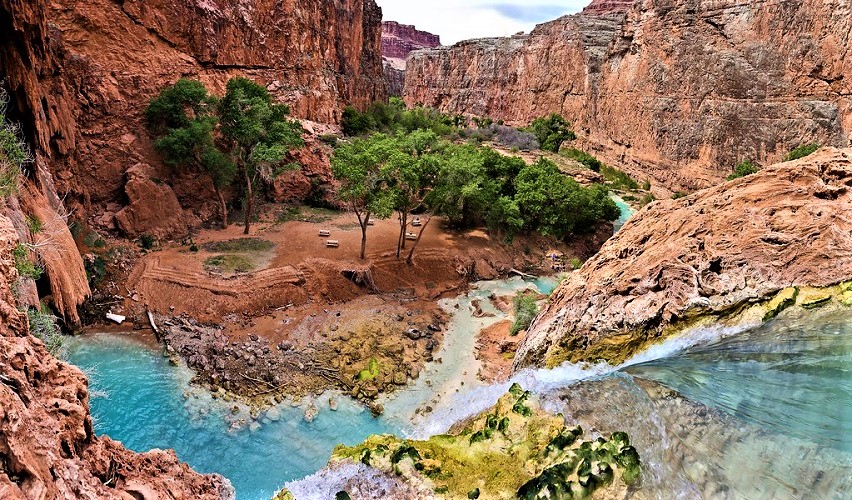
The restrooms are located on the edge of the campsite. Veteran visitors report these facilities are generally well-stocked and “pretty clean.” Still, it doesn’t hurt to pack a wee bit of toilet tissue “just in case.”
Accommodations

There are presently only two choices regarding your stay at the bottom of the Grand Canyon. There are the Havasupai campgrounds or the Havasupai Lodge. (Unless you have hiked the canyon rim-to-rim you truly cannot fully appreciate not having to worry about food and accommodations.)
You will find the lodge in the village, just two miles from the waterfalls. Reservations are not easy to get because it’s small. The rooms here are $550 per night. They can accommodate up to four people. Amenities include electricity, hot showers, and wifi. If you’re going to camp out then be aware that while camping is permitted anywhere within the campgrounds, it is strictly first-come, first-serve.
Cell Service

You will probably not have any cell service for most of the time you are actually in the canyon. Do not fear the time you spend disconnected, revel in it. If you truly have a legitimate need to make a call, you may be able to get a signal closer to the village. The lodge itself has wifi.
Other Tips
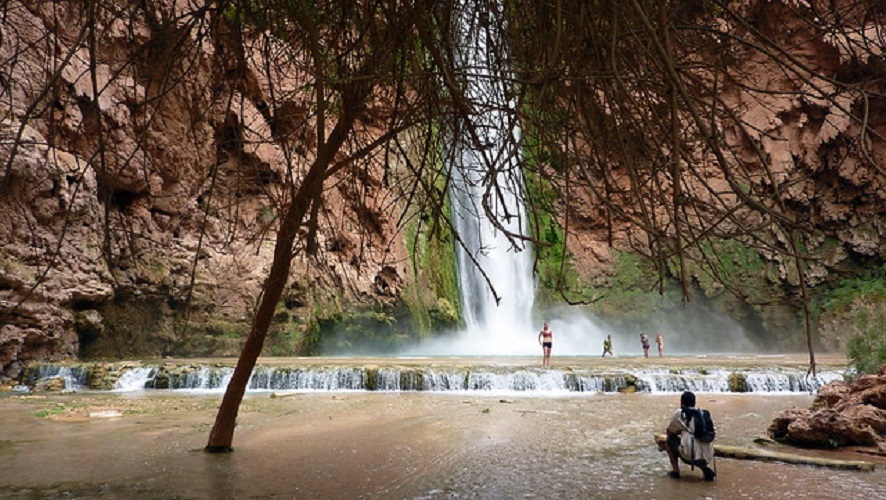
Experienced hikers may already know that the hikers heading out always have the right of way. In this case, it’s important to note that the hike out is fairly difficult. A hiker’s momentum can be impeded every time he/she has to stop to step aside for a fresh hiker who is simply heading down to the falls.
